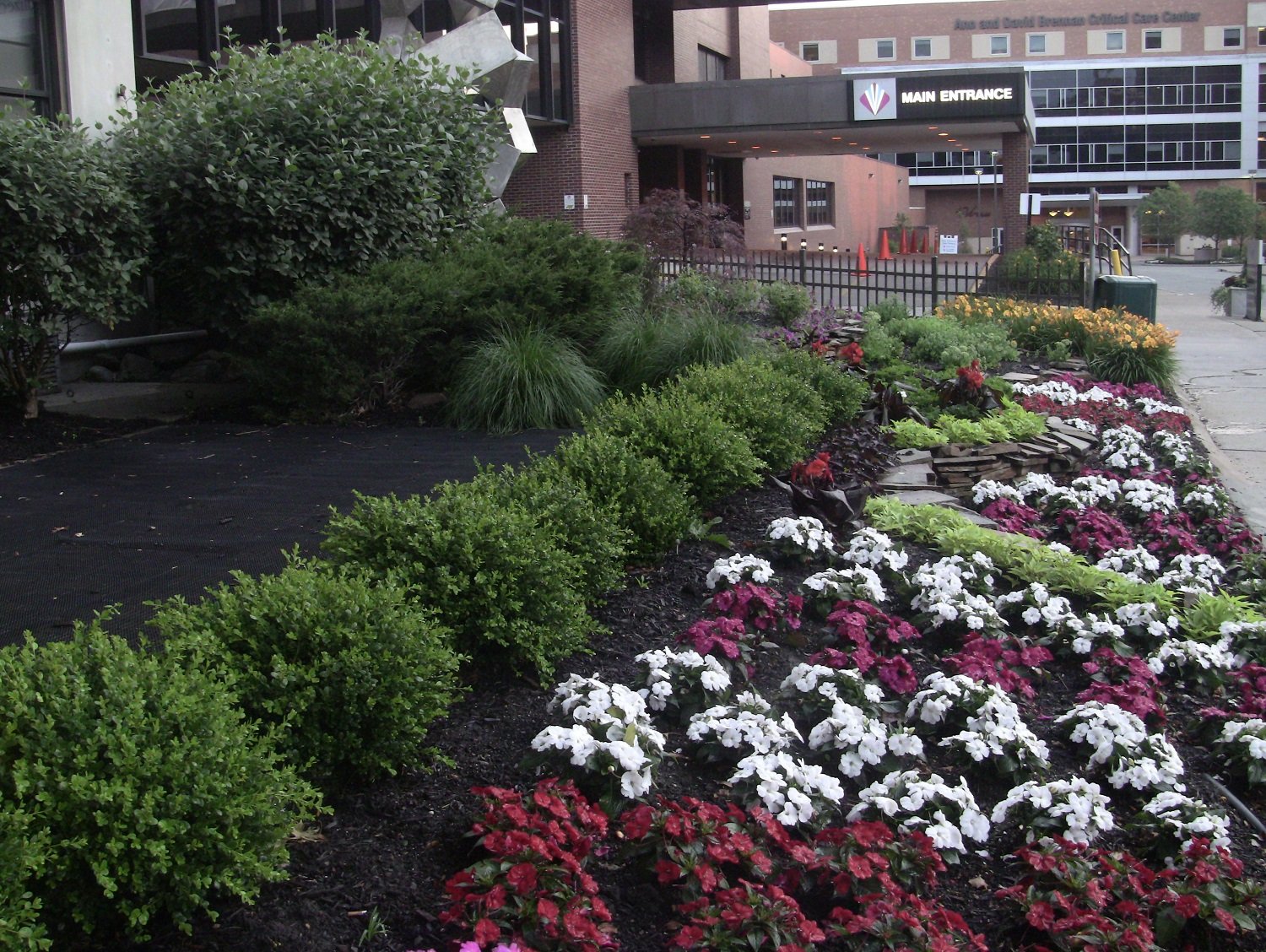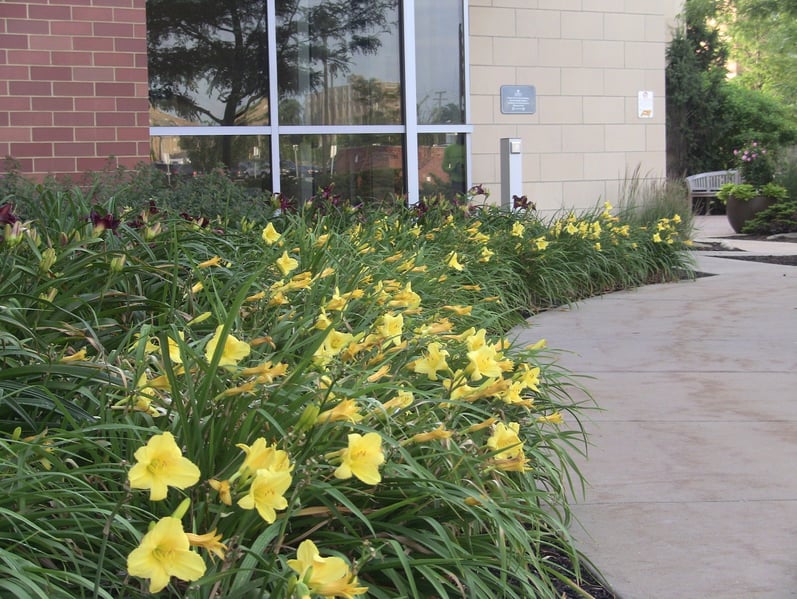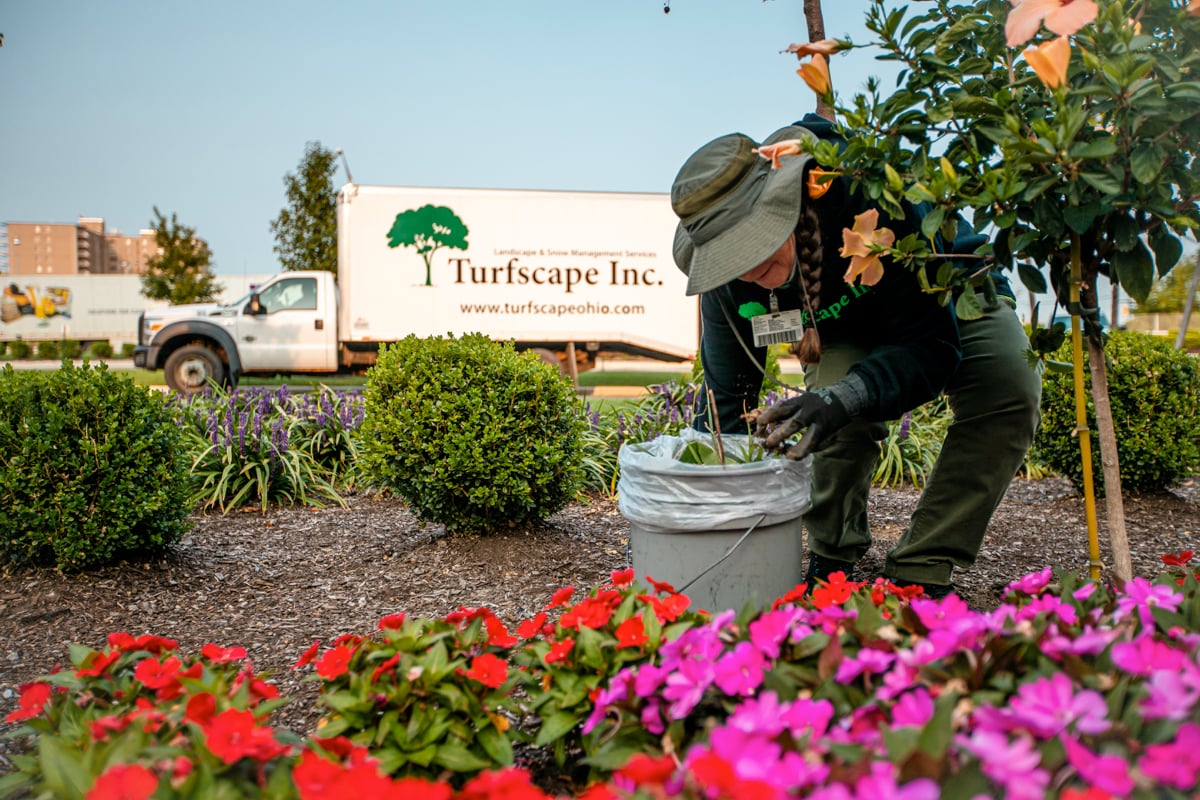Gardens bring so much positivity to people -- everything from psychological to social to physical to emotional and even spiritual benefits.
As a result, hospitals and healthcare facilities in Northeast Ohio have been increasing their adoption of healing gardens to embrace the many advantages well-maintained landscaped areas bring to their patients and visitors.
In fact, various studies have found that just 3 to 5 minutes spent looking at trees, flowers, or water can not only reduce anger, uneasiness, and pain, but also induce relaxation.

The result can turn hospitals from noisy, disorienting mazes that can build stress into places that help reduce anxiety and promote better healing.
But figuring out what healing gardens at hospitals should include to ensure they do their job can be tough for any facility manager to figure out.
Let’s look at therapeutic landscaping and how it can benefit your Northeast Ohio healthcare facility, as well as what elements these spaces need to provide the best outcomes.
Understanding Healthcare Facility Landscaping
Why is nature such a powerful healing force? Because no matter how young or old and despite culture, race, or gender, people react positively to nature. It’s a universal healing tool.
In fact, more than two-thirds of people say they choose a natural setting to escape to when they are stressed, according to Marcus and Barnes researchers. And 95% of those who spent time outside reported mood improvements -- everything from depressed and stressed to more calm and balanced.

There are 3 key reasons healing gardens at hospitals can be such a powerful part of the healing process.
Distraction
When someone is in the hospital, it typically can involve discomfort and pain. Along with physical symptoms, the experience can be mentally exhausting because people generally worry more -- whether they are awaiting test results or are checking in on a health condition or are being prepped for surgery.
Healthcare facility landscaping can captivate our attention. When a person is absorbed in nature scenes, this can distract him or her from any discomfort.
Stress & Anxiety Reduction
Today’s world is full of stimuli competing for our attention. Technology’s advancements have only amplified that. The world is busy, and continues to get busier.
Nature, in contrast, is inherently engrossing. Human brains don’t have to overwork to focus on healthcare facility landscaping. This reduces mental fatigue, refreshing the mind.
Psychological Comfort
Plants take time to grow; one cannot have a beautiful, large tree grow overnight from a small sapling. Nature requires time, care, and patience.
As such, healthcare facility landscaping shows people that there are long, enduring patterns present in life. Plants are a symbol of steady and progressive growth, not an erratic or disruptive life force. This fact in and of itself can be soothing to your patients and employees, as well as their family and visitors.
5 Tips for Healing Gardens at Hospitals
Now that we know what therapeutic landscaping for healthcare facilities can do, it’s time to learn what the best healing gardens include and how they can be designed for maximum benefit.
There are certainly some must-include items in these outdoor areas, as well as other elements that you should avoid adding.

1. Greenery Is Key
Particularly where your healthcare facility is located in a city’s concrete jungle, research has shown that more greenery over hard surfaces is best when it comes to healthcare facility landscaping.
When green isn't present, people tend to think of a shopping mall or an office environment. The goal is to give hospital patients, employees, and visitors a natural escape.
The use of natural materials, such as trees, shrubs, flowers, ornamental grasses, water, and even rocks and boulders, will do the trick. Replicating Mother Nature is a great guide toward the right balance of softscape to hardscape. Experts recommend a balance of 70% plants and 30% walkways and concrete elements.
2. Create Places of Comfort
Healthcare facility landscaping needs to provide people with options to maximize their comfort and not in any way amplify their discomfort.
This means creating multiple options based on a patient's specific needs. For instance, shade is important, but having some access to sunlight also provides balance.
If you’re located in a windy area, providing screening from excess breezes can enhance people’s comfort levels.
And, naturally, you’ll want to provide places for rest. Choose areas to invite visitors to sit and stay awhile. To maximize comfort, pick garden seats with backs and arms to help patients who need help rising from sitting positions. You’ll also want to ensure smoking areas are located away from the healing garden to allow nature’s scents to prevail.
3. Target Multiple Senses
Healing gardens at hospitals are the perfect places to target multiple senses.
Quiet any nearby busy noises like traffic with trees and shrubs. Consider your garden’s location relative to loud air-conditioning units, delivery vehicles, or helicopter pads.
You want to create a quiet, calm space. Add water features, ornamental grasses, and soft chimes for positive sounds.
Incorporate plants that encourage butterflies and birds to add additional upbeat visual and audible elements.
Use flowers that bring lovely color -- as well as incredible scents -- throughout the seasons.

Visuals should be round and natural, not abstract, pointy, or angular. Long, straight lines and dead-end paths or complex mazes are typically not conducive to a healing environment.
4. Create Opportunities for Movement
You can best achieve the physical and emotional benefits of healing gardens at hospitals by creating chances for patients to get movement and exercise.
These spaces can include paths for walking, rehabilitation units, a walking or jogging route for staff members, and ensuring gardens are visible from indoor corridors that can also be used for movement and exercise.
5. Accessibility, Privacy & Social Interaction
If possible, healing gardens at hospitals should be visible from nurses’ stations and have easy access.
This means entry into the outdoor space and pathway materials and size should be easily navigable by wheelchairs, crutches, and other common healthcare tools. Use clearly marked signage to guide people to and from the space from lobbies, corridors, and patient rooms.
A healing garden should offer one-on-one opportunities for conversation and quiet contemplation, as well as places to gather for social contact and support from larger groups.
Encourage Healing With Therapeutic Landscaping
Healing is one of the most important -- if not the most important -- service you provide. Anything you can do to increase the healing process can make your healthcare facility shine in Northeast Ohio.
Healing gardens at hospitals have proven to contribute to healing. As you read through our recommendations, you might find that your facility presents some challenges in terms of garden location or incorporating the right elements. We know it can be overwhelming, and that’s why we’re here. Turfscape professionals have extensive experience designing and installing therapeutic spaces and would love to help provide solutions to your obstacles and help you get the space your patients, employees, and visitors crave.
Turfscape would be happy to discuss some of these therapeutic landscaping tips with you. Request a proposal today for your Northeast Ohio property. We’ll review your options and budget together so you can make the best choice.



